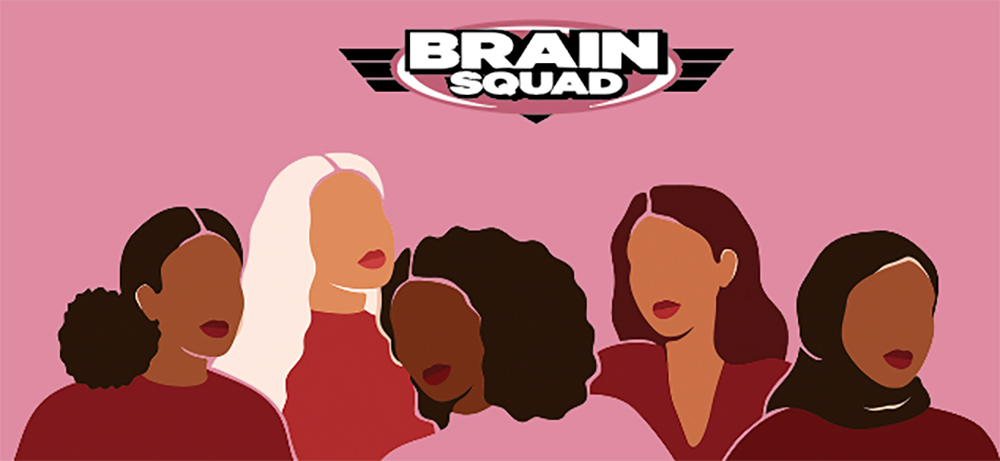
All Men – and Women – Are Created Equal
How we can level the playing field in the industry.
Published
3 years agoon
WE’VE ALL READ the articles, some in this very magazine, that discuss why women don’t start more businesses, or why women aren’t speakers at tradeshows, or members of industry boards. Those articles, while helpful in identifying the problems that women face, don’t always follow through with suggestions for dissolving those barriers or inspiring more women to take on visible roles. These issues, like lack of recognition as legitimate business people, the tendency to want to deal with a man if one is available, a lack of confidence, and a fear of failure, are all issues that can be dealt with if everyone involved is willing to take the time and make the effort necessary. All it takes is some adjustment of thinking and some adjustment of practices.

One factor that impacts the visibility of women is the relatively small number of women who speak on panels and at tradeshows. There are a few ways to combat this problem. One is for the organizations that run the shows to make a commitment to recruit more women to speak. This might mean publicizing speaking opportunities in women centered groups on social media, or asking the current speakers or vendors if there are any females they might recommend, and then pursuing the recommendations given. Another factor is that women can be reluctant to speak, either because of a fear of public speaking, or worry about their appearance, or ability to hold an audience. To combat that, more experienced speakers, male or female, could mentor fledgling speakers and help them become more confident. People who have podcasts or online shows could also offer fledgling speakers interview opportunities, allowing the new speakers to get comfortable speaking extemporaneously and on camera. If more organizations were willing to actively recruit women, and more women were mentored and trained in how to be comfortable speaking and educating, we would soon see rosters that looked more balanced.
Another issue that often faces women who own businesses is the cultural disposition toward dealing with a man if one is available. This can mean that a female business owner who is traveling with a husband or male employee can be discounted or ignored in favor of the male who is accompanying her. “I am proud to be a female business owner in a predominantly male dominated industry, but there are still many assumptions made at tradeshows that need updating,” says Alison Banholzer, Wear Your Spirit Warehouse. “It is rare that I will walk into a booth and be approached by a sales rep as a ‘buying authority’ prior to them addressing the men in the booth. Most assume I have a male counterpart that is going to be the decision makers. That is a mistake!”
Again, this problem requires a two-part solution. The first is on the part of the companies that are manning the booths and employing the salespeople. Recognize this cultural predisposition does exist and some salespeople may not even be aware of it. Have a meeting and discuss the issue and make all salespeople aware not to assume. The other half of the responsibility for combating this issue lies with the women who encounter the problem. Speak up, let the salespeople know you are the business owner and the decision maker. Women can also vote with their dollars and decline to work with companies or salespeople who overlook them. Losing a few sales can be a great teacher and motivator.

For those who run companies, making women more visible may take a commitment to promoting and recognizing women in your organization. Earmark women who perform well for extra training or grooming for promotion or management. Establish mentorship programs where more experienced women who are higher on the career ladder can help new female employees learn the skills they need to be promoted. Make sure female employees are getting and taking credit for the work they do. Women have a tendency to say “we” or speak of a team when talking about what’s been accomplished. Make sure women who have done exemplary work are getting recognized and spotlighted. It is also helpful to make sure that women are getting an equal chance at high-value, visible work and leadership roles. In teams, women may be assigned to lesser value, less visible positions by default.
Another issue that keeps women from being visible in the business world can be cultural expectations of a women’s role in family life. As much as we like to think caring for a family and a home is a 50/50 partnership, the reality is that a lot of the burden still resides with the women of the family. Like much of what has been discussed, this issue requires a readjustment of thinking and behavior, which requires changing the cultural norms that say that women are solely responsible for picking up children from school if they’re sick, handling meal prep and groceries, and keeping the house clean. Chores should be apportioned based on who has time to do them, not based on gender. Women should request their spouses help more, (if they don’t already) or, if the spouse doesn’t have time, apportion some of their income to potentially cover things like house cleaning, grocery delivery, or a meal service. It isn’t likely that cultural norms that have been in place for centuries will change overnight, but if more women and men start structuring lives in which both partners work is valuable and both are equally responsible for the tasks involved with maintaining a home and a family, the needle will move.

Finally, on the issue of fear, fear of failure, fear of success, fear of speaking up, fear of confrontation, impostor syndrome, whatever it might be, there’s really only one solution. Sometimes the only way to deal with fear is to acknowledge it and then walk through it toward your goal. The first time speaking at a conference or going to a Chamber of Commerce meeting and saying you’re a business owner will be scary. The next time, however, will be easier. Part of the responsibility for making women more visible lies with the women themselves. If we’re not willing to stand up and put ourselves out there, we can’t complain when no one else is willing to put themselves out to help make us more visible.

We asked our male Brain Squad members: How are you being an ally to women in the industry?
- Treating them as equals in the workplace. — Michael McCall, Chattanooga Labeling Systems, Chattanooga, Tennessee
- By respecting and understanding their strength. A woman who steps into her greatness and fully commits herself is so unstoppable. — Gavin StGeorges, Proud TShirts, Miami
-
I try to hire female contractors. I discount services to female-owned/run shops and/or printers. When I bring in mercenary printers, I offer the work to females first. When I train printers, probably 70 percent of them are female. We primarily hire female printers for internships (only one male in 10 years). A lot of little things. — Eric Carnell, Independence Printage, Bellevue, Washington
Advertisement - Less mansplaining. More empathy. Total equality. — Andy MacDougall, MacDougall Screen Printing, Royston, British Columbia
- Be supportive and treat them no differently than anyone else. Actively listen and help solve challenges that occur. — Marshall Atkinson, Atkinson Consulting, Mesa, Arizona
Kristine Shreve is the founder and CEO of Kristine Shreve Consulting (kristineshreve.com), the director of marketing and outreach for Applique Getaway, and the creator and host of the Business + Women podcast. Shreve is also the founder of the Women in Garment Direction Group and leads the On My Way to the Getaway Group on Facebook.

SPONSORED VIDEO
Let’s Talk About It
Creating a More Diverse and Inclusive Screen Printing Industry
LET’S TALK About It: Part 3 discusses how four screen printers have employed people with disabilities, why you should consider doing the same, the resources that are available, and more. Watch the live webinar, held August 16, moderated by Adrienne Palmer, editor-in-chief, Screen Printing magazine, with panelists Ali Banholzer, Amber Massey, Ryan Moor, and Jed Seifert. The multi-part series is hosted exclusively by ROQ.US and U.N.I.T.E Together. Let’s Talk About It: Part 1 focused on Black, female screen printers and can be watched here; Part 2 focused on the LGBTQ+ community and can be watched here.
You may like
Advertisement

Arcus Printers Barracuda Conveyor Flatbed Cutter

The Profit Impact of a Market Dominating Position

Inkcups Announces New CEO and Leadership Restructure
SUBSCRIBE

Bulletins
Get the most important news and business ideas from Screen Printing magazine's news bulletin.
Advertisement
Latest Feeds
Advertisement
Most Popular
-

 Case Studies2 months ago
Case Studies2 months agoHigh-Density Inks Help Specialty Printing Take Center Stage
-

 Art, Ad, or Alchemy2 months ago
Art, Ad, or Alchemy2 months agoF&I Printing Is Everywhere!
-

 Andy MacDougall2 months ago
Andy MacDougall2 months agoFunctional and Industrial Printing is EVERYWHERE!
-

 Columns3 weeks ago
Columns3 weeks ago8 Marketing Mistakes Not to Make When Promoting Your Screen Printing Services Online
-

 Editor's Note3 weeks ago
Editor's Note3 weeks agoLivin’ the High Life
-

 Marshall Atkinson3 weeks ago
Marshall Atkinson3 weeks agoHow to Create a Winning Culture in Your Screen-Printing Business
-

 Thomas Trimingham2 months ago
Thomas Trimingham2 months ago“Magic” Marketing for Screen Printing Shops
-

 Case Studies3 weeks ago
Case Studies3 weeks agoScreen Printing for Texture and Depth













